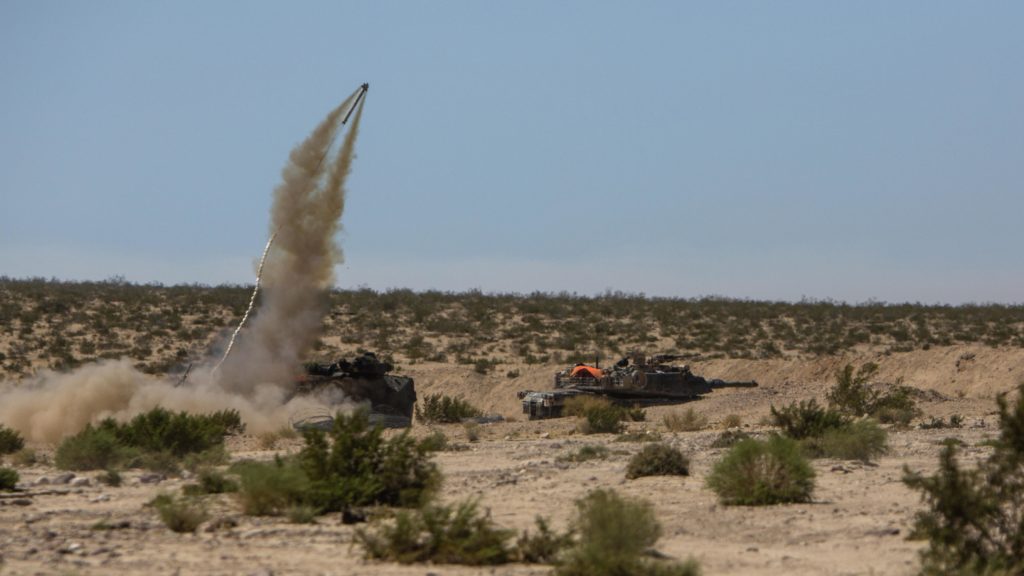Story by Marti Yoshida
Public Affairs Office

FORT LEONARD WOOD, Mo. (Oct. 15, 2018) — Beginning in January 2019, the U.S. Army Engineer School’s 12-week Combat Engineer Heavy Track Course at Fort Leonard Wood will be consolidated to a joint course to include active Army, National Guard and Reserve, as well as the U.S. Marine Corps.
With the Marines comes a new requirement for the course to provide a demonstration of the Linear Demolition Charge System launching a live Mine Clearing Line Charge or MICLIC.
Cadre with the Army Engineer School will get the chance to demo a live LDCS launch later this month for their current class in preparation for the first joint CEHTC class in January.
The training event is scheduled for Monday morning, according to Maj. Brett Medsker, 1st Engineer Brigade, Operations officer, however, the date is subject to change based upon weather conditions, such as fire index, atmospheric pressure and low cloud cover.
“Our alternate date is Oct. 29,” he said. “We have through Oct. 31 to complete the trial run.”
According to Glen, Fort Leonard Wood can only fire a live LDCS on post during the months of April, May, August, September and October, for environmental reasons.
“We will fire five live LDCS’s a year, but every class may not get to see one,” Glen said.
The key take-away for the public is that this training will create a larger boom.
“This will be a much louder boom than the usual demolition range, hand grenade range or aircraft range firing,” Glen added.
This new addition to the course provides a major benefit to combat engineers in training.
“Launching a MICLIC from the LDCS gives students the chance to see and experience the effects of the blast, which they don’t experience with inert charges,” Glen said.
The LDCS allows engineers to clear lanes and permits freedom of movement through the lane.
“This is the first time we will fire live on the LDCS for this course,” said Gregory Glen, U.S. Army Engineer School, Combat Engineer Skills Division chief. “We have been teaching the LDCS since the course started here on Fort Leonard Wood in 2011.”
Glen added, since 2013, the CEHTC has fired inert tubs, which simulate a demolition charge, while the U.S. Marine Corps has been firing MICLICs from the LDCS since they started their course at Fort Knox, Kentucky, and when they moved to Fort Benning, Georgia.
In the future, the class, which allows up to 30 students, may be expanded to 14 weeks, and include training on the Joint Assault Bridge, Glen said.
Currently combat engineers train on the M9 Armored Combat Earthmover, the Armored Vehicle Launch Bridge and Assault Breacher Vehicle.
